6 important knots for bushcraft and survival (picture and video guide, +PDF)
So that your connections are rock solid, I will show you my 6 best knots for bushcraft today. You learn step by step how to tie them yourself.
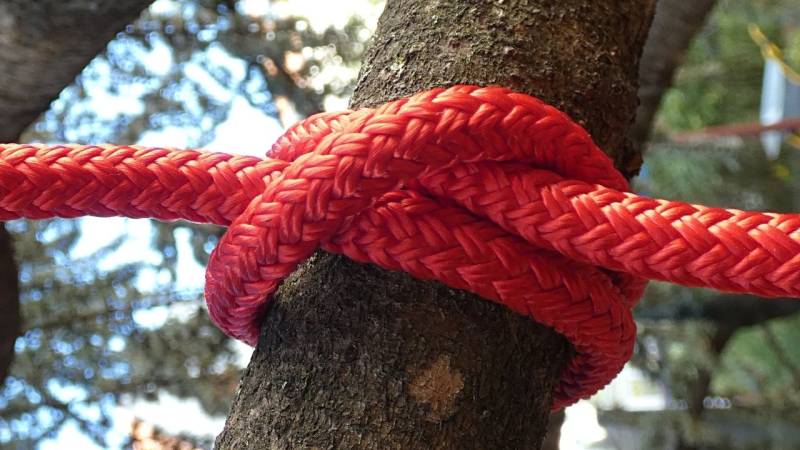

From Martin Gebhardt. Check out my “About me” page.
👉 The key facts from this guide
- Knots are essential in bushcraft and survival, they are used to connect two ropes, to tie one end of a rope to an object, or to form a loop.
- The bowline knot is a fastening knot that can be adjusted and does not tighten under tension. It is ideal for tensioning tent lines or the cords of your tarp.
- The figure-eight knot is a loop knot used to tie a secure loop. It is easy to tie, holds well, and is easy to untie.
- The clove hitch is a connection knot for connecting two ropes. It holds well when the connections are kept under constant tension.
- The square knot is another connection knot for connecting two similar rope or thread ends. It is quickly tied and holds well when both ropes are loaded.
- The sheet bend is a fastening knot that is easy and versatile to use. It is suitable for attaching a rope to an object.
- The perfection loop, also known as the angler's loop, is a loop knot that does not slip under tension. It is easy to tie and can withstand a lot.
Attach tarp, hang hammock, tie bundle of firewood.
You always need knots in Bushcraft and survival.
To ensure your connections are rock solid, today I'll show you my best knots.
You will learn step by step how to knot these yourself.
Why we need knots
Knot tying has long been a part of seafaring, but Bushcrafters and survivalists benefit from this knowledge as well.
Knots have the following tasks:
- Connect two ropes together, the connection knots
- Tie one end of a rope to an object (e.g., tree trunk), or bundle loose objects together, the fastening knots
- Create a loop that does not tighten or tightens, the loop knots
My requirements for the knots are that they are easy to tie and secure.
I will now introduce you to 6 knots, each consisting of two connection knots, fastening knots, and loop knots.
The video about my knots
Watch my video now and learn how to tie the following 6 knots:
- Top sail sheet bend
- Bowline
- Sheet bend
- Clove hitch
- Round turn and two half hitches
- Perfection loop (Angler's loop)
Top Sail Sheet Bend
The bowline knot is a fastening knot that can be adjusted and does not tighten under tension.
It is mainly used for tensioning tent lines. You can also use it to tension the cords of your tarp.
This is how it's done:
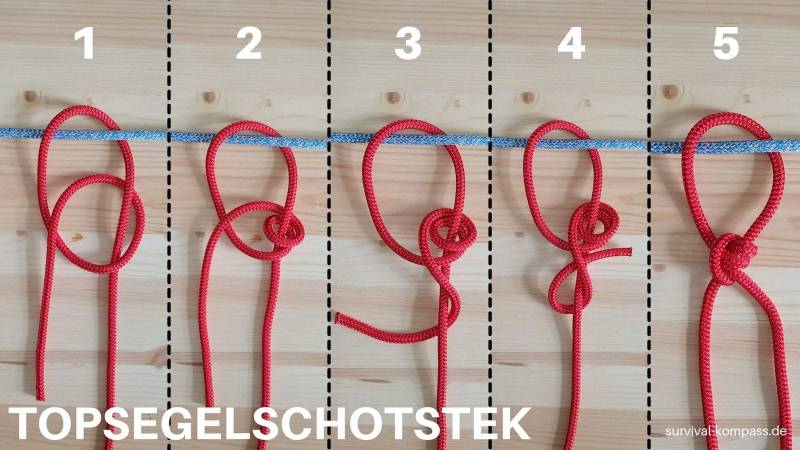
I mainly use this knot to secure my tarp over my hammock. It is perfect for this purpose.
Bowline Knot
The bowline is a knot that is used to tie a secure loop. It is the most commonly used knot in seafaring and belongs to the loop knots.
In addition, it is easy to tie, holds well, and is also easy to untie. Therefore, it is one of the most well-known knots.
It is also called: Bulin, Bolein, Timber Hitch, Sheet Bend, Rescue Knot/Loop, Simple Anchor Hitch.
It is used in seafaring, climbing, and rescue operations.
In the picture you can see the following in order:
- Place small loop
- from below the loop
- around the fixed end
- parallel back again
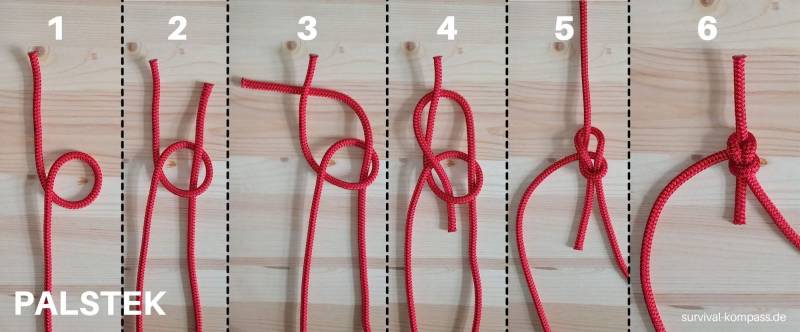
Sheet Bend
The Sheet Bend is a knot for joining two ropes together. Therefore, it belongs to the joining knots.
It is also called rear hitch, weaver's cross knot, and weaver's knot.
It is important with this knot that it only holds well if the connections are kept under constant tension.
There is a chance that it will come loose with low to no load.
Here's how you tie it, it's effortless.
- Use rope 1 to create a loop
- Use rope 2 to enter the loop from below
- Then use rope 2 to go around the loop (first around the loose end, then around the standing end)
- Then insert rope 2 between rope 1 and the loop
- At the end, both ends are on the same side
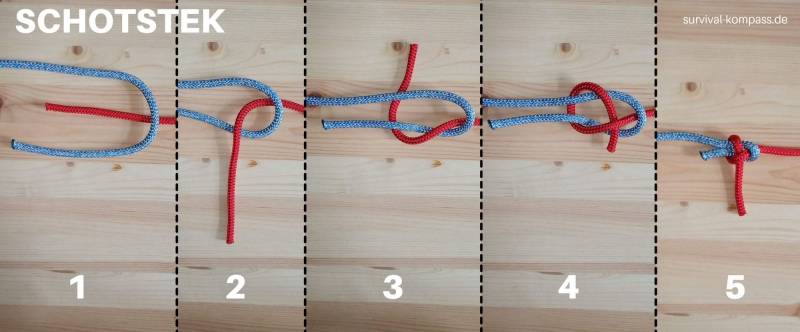
Reef Knot
The reef knot is a knot for joining two similar rope or thread ends. Therefore, it belongs to the connection knots.
It is also called a double knot, reef knot, Samaritan knot or weaver's knot.
You can put a lot of strain on the knot, and it is quickly tied.
Attention: it is often tied incorrectly. This results in an old woman's knot or a thief's knot. These two knots are very unreliable and not strong!
It is best to use natural fiber ropes for the knot, as they hold better due to their higher friction.
Furthermore, the following notes:
- Only use ropes that are the same in structure and thickness
- Always load both ropes
- DO NOT use this knot if a life depends on it
This is how to tie the reef knot correctly. Pay attention to the two lower ends. The tension should be placed there.
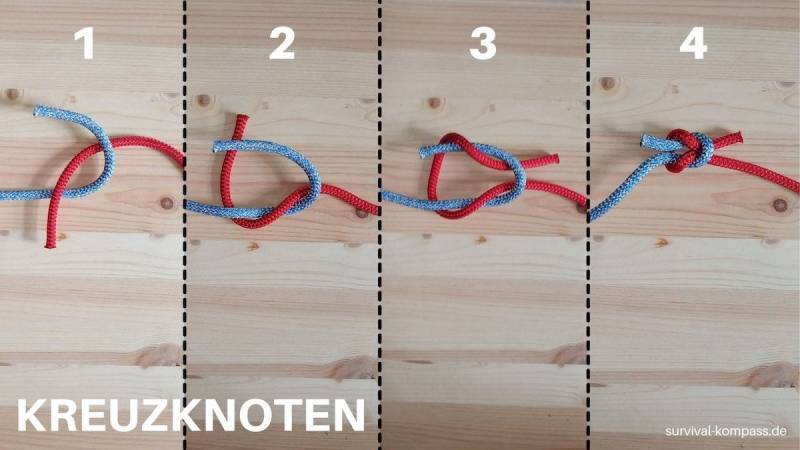
Not usable: The Old Wives' Knot
Completely unreliable! (learn more here)
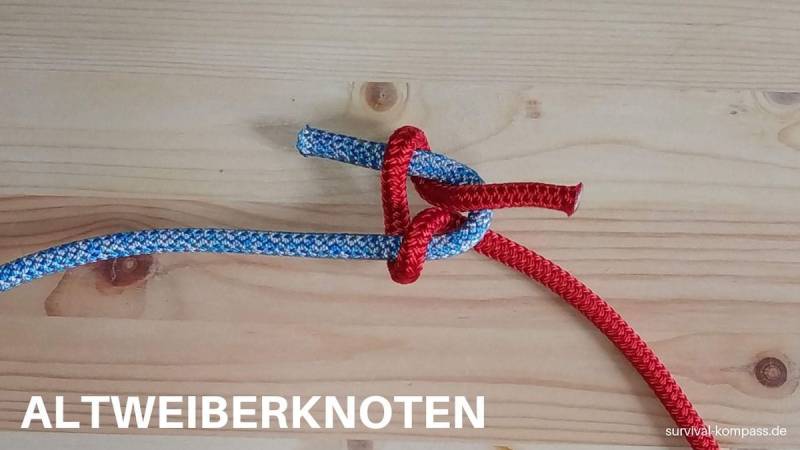
Not Usable: The Thief Knot
Less resilient and difficult to untie! (learn more here)
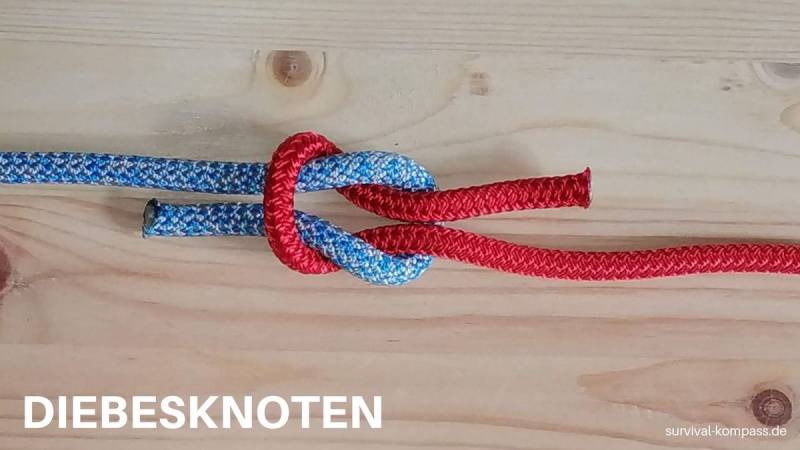
Clove hitch
The Clove hitch knot is a simple and versatile knot to use. It belongs to the fastening knots.
It is used to attach a rope to an object. Additionally, it can be inserted, laid or thrown.
I particularly like about the knot that it is also suitable for the middle of a rope (the ends are not free in this case).
Refer to these two options on how you can tie it quickly.
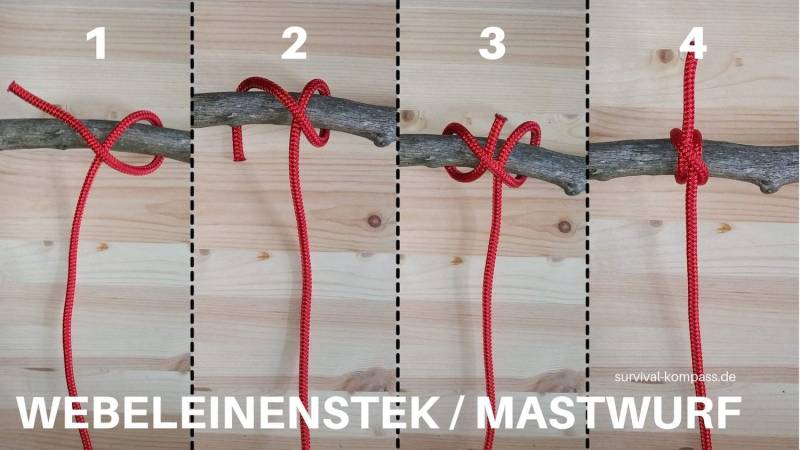

The Angler's Loop (Perfection Loop)
I learned this knot while fishing and it is a standard one.
This is a loop knot (similar to the bowline), which does not slip under tension.
Outside of Germany, the knot is known as the "Perfection Loop" - the perfect loop.
Why perfect? Because the finished loop is in line with the line it was tied to.
Furthermore, the knot holds up well, is easy to tie, and looks perfect.
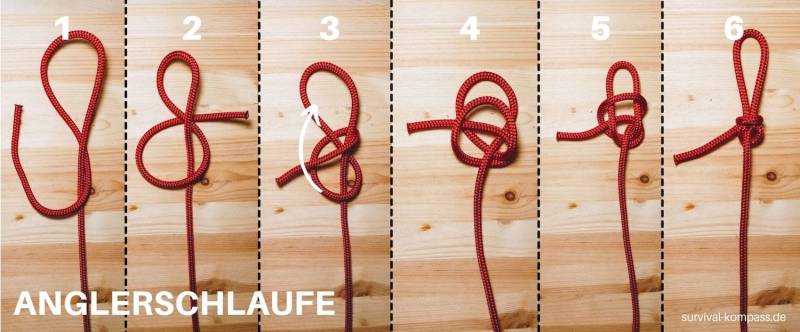
Summary
These were my TOP 6 knots for bushcraft and survival.
Most of all, I need the square knot, the bowline, and the sheet bend.
I have packed all the nodes into a PDF for download (in German), please download it:
[PDF Document: 6 important knots for Bushcraft and Survival]
P. S. Be sure to also read my guide "Learn this basic knot, and you can easily tie four more [picture guide]".
If you want to practice on the go, I highly recommend the app "Knoten 3D (Knots 3D)". The app is available for Android and here for iPhone.
Did I forget an important knot?
Will you now apply these knots in practice?
How did you like the instructions?
Write your thoughts in the comments now!

Sources for the guide
https://de.wikipedia.org/wiki/Liste_von_Knoten
https://www.mytilus.de/alt/knoten-webeleinenstek.htm
https://de.wikipedia.org/wiki/Topsegelschotstek
https://de.wikipedia.org/wiki/Palstek
https://www.doctor-catch.com/de/angelknoten-und-montagen/perfection-loop

Author of the guide
Martin Gebhardt
Hey, I'm Martin. On my blog, you will learn the basics and numerous details about living in the wild. I think survival, bushcraft and the good life in nature are the keys to happiness. Find me here on Instagram or on YouTube. You can find more about my mission on the About Me page.
Was this guide helpful?
109 people found this guide helpful.
5.00 out of 5 points (109 Ratings)
Comments (0)
This post may contain affiliate links. So if you click on the links and make a purchase, I will receive a small commission at no additional cost to you. Click here, to learn more about it.



